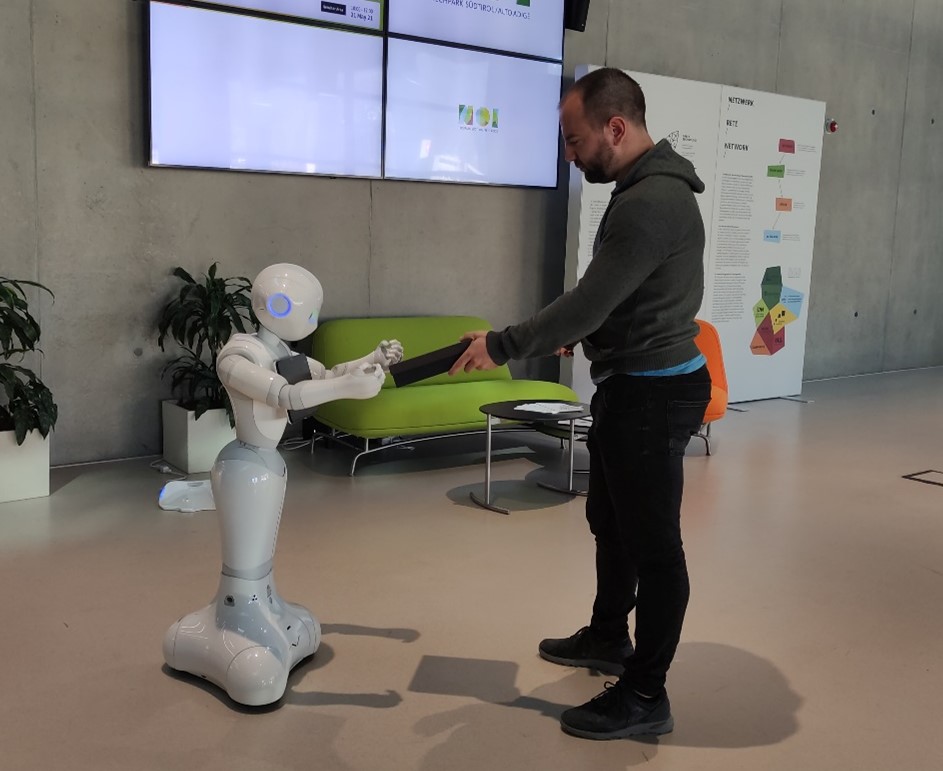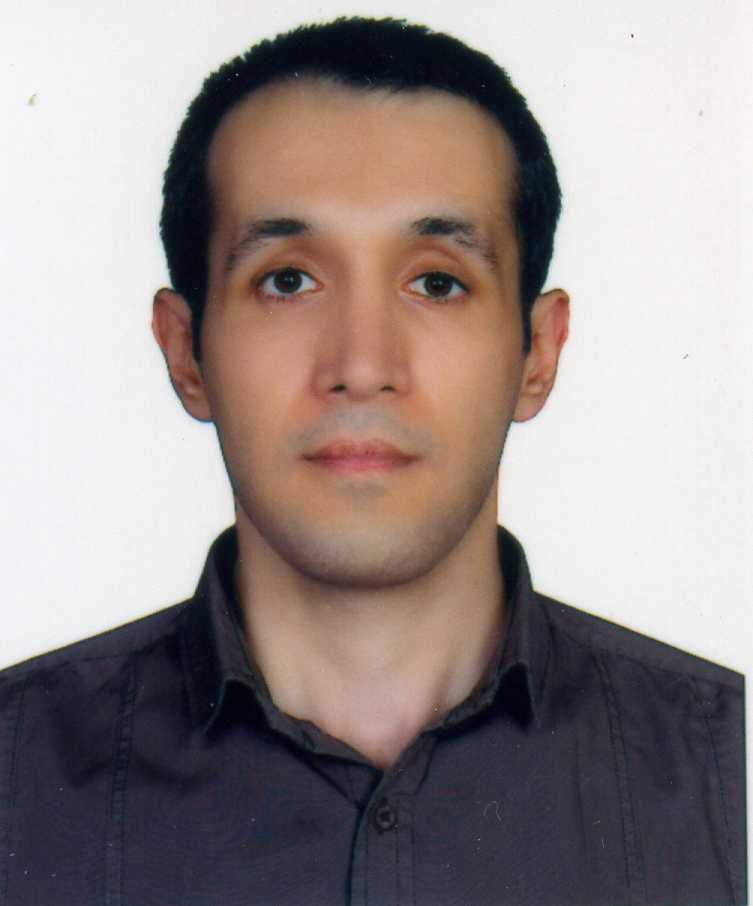Seminari per Scuole
Uno degli obiettivi delle nostre attività è quello di condividere i risultati delle nostre ricerche con i giovani studenti delle scuole superiori. In particolare offriamo seminari su richiesta per le scuole superiori sui nostri progetti recenti. Una tipica presentazione è di circa 40 minuti per lasciare spazio alle domande e per adattarsi a una normale ora di lezione. Le presentazioni sono offerte in generale in lingua inglese, ma su richiesta alcune possono anche offerte in tedesco o italiano.
 | Dynamic models for emotion estimation from physiological signals by Isabel Barradas |
Looking around, we can easily identify a large number of technological systems: a smartphone, a car, or even a washing machine. These systems are becoming more and more innovative, designed to make the interaction with humans to be as natural as possible. Now, if we think about human-to-human communication, emotions play an essential role in how we interact with others. If a colleague of yours looks sad, you are probably able to recognise it and adapt your way of communication. Accordingly, if machines are to achieve equally natural interaction, they need to be able to recognise the user’s emotional state. Over the last two decades, efforts have been made in this direction, in which emotions have been detected from facial expressions, gestures, and speech. However, these conventional techniques are constrained by social protocols and are easily masked. As an alternative, electrophysiological signals are involuntary and spontaneous, and are also able to be recorded continuously in time. Since emotions affect both the central and the peripheral nervous system, our goal is to combine signals such as electroencephalogram, heart rate, respiration, and galvanic skin response into a multi-modal approach for emotion recognition. Even though there are many studies in this direction, most contributions apply static machine learning approaches that neglect the dynamic nature of emotions. In our work, we aim to model emotion intensity (e.g., from SLIGHTLY happy to VERY happy) and quality (e.g., from HAPPY to SAD) by combining mathematical frameworks with recent developments of emotion theory that highlight this dynamic character. The development of these models will not only contribute for a better understanding of the emotional processes but will also benefit several applications, such as gaming, mental health monitoring, and driving-assistance technologies.
 | Action, plan and intention recognition – a brain-inspired approach by Franz Van Horenbeke |
In the future, we expect robots and other artificial systems to interact with us humans in natural and intuitive ways (in our daily life, at work…). For this to be possible, these artificial systems need skills that allow them to understand humans (e.g., verbal and gestural communication), as well as to act in human-like ways. One of these skills consists of understanding the actions being performed by a person, or their intention, by observing their movements in a particular context. Indeed, we humans are continuously interpreting the actions and intentions of others when we interact with them or we observe them (e.g., we understand if they are cooking, they are playing football…), and we are very good in this task. This allows us to collaborate (or compete) with others in more intuitive and efficient ways, as well as to predict their next actions and understand their internal state. Building systems able to recognize human actions and intentions, however, comes with a set of challenges that need to be addressed if we want them to achieve performances that are close to those achieved by humans. Some of these challenges have already been addressed successfully through different artificial intelligence techniques, but others, such as that of learning new actions or plans by observing them only few times, remain to be overcome. In order to tackle these challenges, we have drawn inspiration from the human brain by designing and partially developing an action and plan recognition system that mimics some of the brain mechanisms that we believe are essential for this task. Preliminary results already indicate the capability of our system to learn new actions faster than other existing systems.
 | Employing robotic manipulators in industry by Hoomaan MoradiMaryamnegari |
A robot consisting of several serial links is called a robotic manipulator. These kinds of robots are widely used in industry applications for grasping different objects and putting them to other locations. Since different manipulators are employed in different jobs, they have different number of joints, sizes, and shapes. In this presentation, we are going to talk about the available manipulators used in industry, and the various jobs that they are designed for. Furthermore, we will be familiar with the mechanism of the robotic manipulators in terms of degrees of freedom of every segment and the whole robot. Then, we will learn about the way these kinds of robots can be controlled using actuators and sensors. Finally, we will see a demo about grasping and moving an object by a robot named Franka Emika Panda in which first a human teaches the robot how to accomplish its task and then the robot does it over and over.
 | Safety in human-robot interaction and collaboration by Ehtisham ul Hasan |
Physical human-robot interaction (pHRI) is a field of research progressing rapidly over the last years. One of the topics studied in this context is safety. Safety is dependent on various factors like speed, distance, power and force and the limits of these factors have been standardized by International Standardization Organizations. In line with the standard safety measuring components, so far, safety has been mainly addressed in relation to impacts, over a single interaction point, by limiting power and energy flowing over this point. In contrast, in our work we are working to involve multiple contact points as a human and robot collaboratively perform a task. Moreover, we are also working on to extend the safety concept to consider physiological conditions like fatigue and muscle stress in addition to limiting power and energy at the contact points. For this purpose, we aim to use a motion capture system to estimate human physiological factors and combine this information with power and force information that is related to the interaction points to develop a controller that enhances safety in human-robot interaction and collaboration scenarios such as supportive or assistive tasks.
 | Path planning for autonomous vehicles by Marco Frego |
Path and trajectory planning for autonomous robots and vehicles is a central topic for mobile robots. The focus will be on local planning, but an overview of global planning will also be offered.
In the presentation, we will introduce the concepts of path and trajectory and discuss the most intuitive features that a good path should have. We will start with the geometrical description of the most simple path elements like line segments and circle arcs and then enlarge this family of motion primitives with other curves. Interesting examples are the biarcs, the clothoids and the polynomials.
Afterwards, we will discuss how to add vehicle-dependant constraints like the minimum turning radius and introduce the Dubins vehicle and its variants. It is possible to introduce these concepts making use of elementary mathematics, geometry and physics. Global planning opens the way for a more general discussion on heuristics taking into account heterogeneous disciplines, for instance the Potential Fields or the Rapidly-exploring Random Trees.
Photography: credits NOI Techpark/Daniele Fiorentino